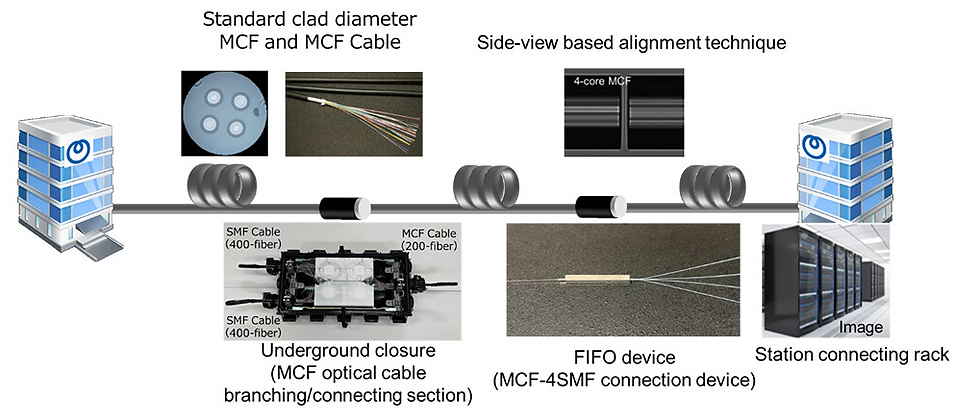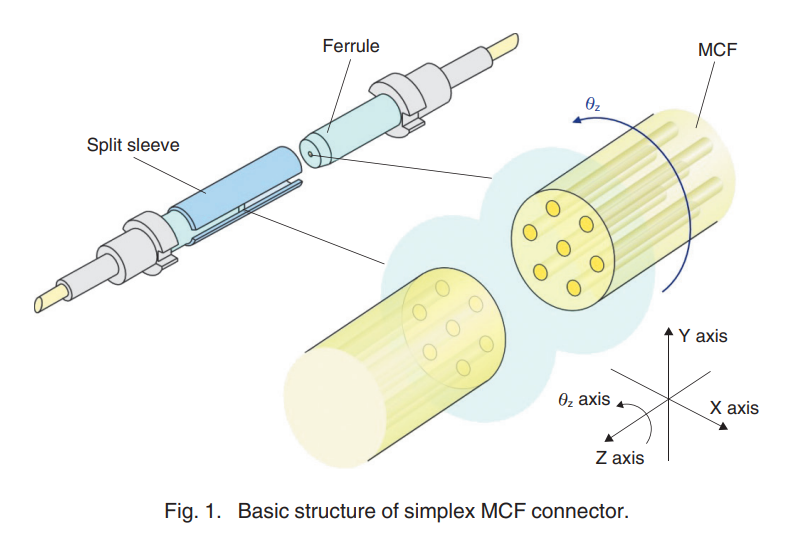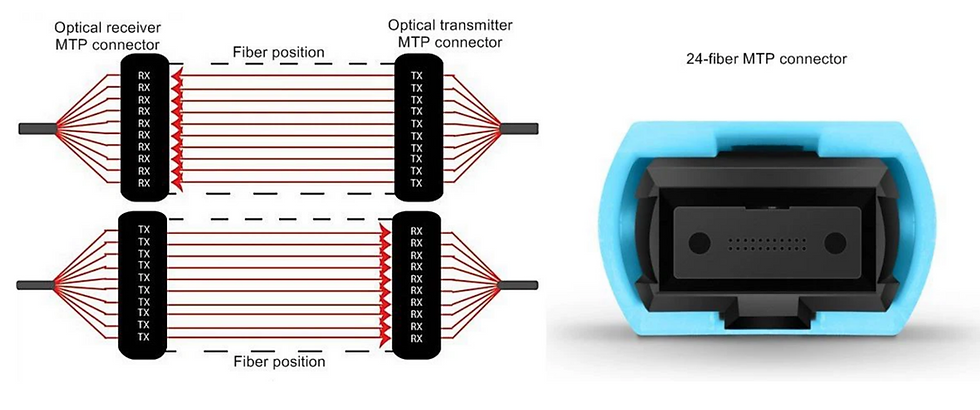NTT - Lineup of multi-core optical fiber construction, operation, and maintenance technologies that realize four times the capacity with a single optical fiber
- Nguyen Tran Tien
- Aug 21
- 2 min read
NTT Corporation (Tokyo) has announced a major breakthrough in developing field-ready construction, operation, and maintenance technologies for 4-core Multi-Core Optical Fiber (MCF). This fiber enables four times the transmission capacity of conventional single-core fiber within the same outer diameter. The innovation forms part of NTT’s IOWN (Innovative Optical and Wireless Network) initiative, which aims to establish ultra-high-capacity optical infrastructure to meet the explosive demand for data transmission between data centers and submarine cables, where space is severely limited.

Before MCF can be deployed at scale, one key challenge lies in precise core alignment. Unlike single-core fiber, MCF contains four separate cores that are not located at the center. Proper angular alignment is critical to ensure loss-free connections during splicing. Another challenge is compatibility with existing single-core fiber networks, which dominate current infrastructure. For MCF to be practical, technicians must be able to splice and repair it quickly, especially in emergency field conditions.
NTT introduced a complete lineup of technologies designed to overcome these challenges and enable field deployment of 4-core MCF:
Angle Alignment with Side-View ImagingBy capturing side-view images of the fiber cross-section, the system can detect the angular position of the four cores and automatically rotate the fiber for perfect alignment before fusion splicing. This technique has been integrated into field splicing equipment, allowing technicians to handle MCF in the field as reliably as in controlled laboratory or factory settings.
Fan-In/Fan-Out (FIFO) ConnectionDeveloped with NTT Innovative Devices, this solution enables seamless interconnection between one 4-core MCF and four individual single-core fibers. The design uses a dual-layer quartz PLC (Planar Lightwave Circuit) structure, a proven technology widely used in optical branching devices. This makes it highly reliable, manufacturable at scale, and compatible with today’s optical distribution systems.
In-Station Accommodation & Wiring NTT has also designed methods to integrate MCF cables within network stations and central offices, ensuring smooth cable management, routing, and operational efficiency. This is essential for scaling up MCF deployment across networks.
Beyond the 4-core version, NTT is also working on ultra-high-density cables that can contain up to 8,000 cores (2,000 MCF units bundled together) within a diameter of about 20 mm. Such cables would dramatically increase transmission density while reducing space requirements.

These technologies address the core barriers to practical deployment of MCF in real-world environments. By making installation, splicing, and maintenance of MCF feasible in the field, NTT paves the way for its adoption in inter-data center connectivity, submarine cables, and other high-capacity backbones where space efficiency is paramount.
NTT’s roadmap envisions commercial application and international standardization of 4-core MCF technologies by around 2027. Achieving this would establish MCF as a mainstream solution for scaling optical capacity without exponentially increasing fiber counts or duct space.
Read more at: NTT-GROUP



Comments